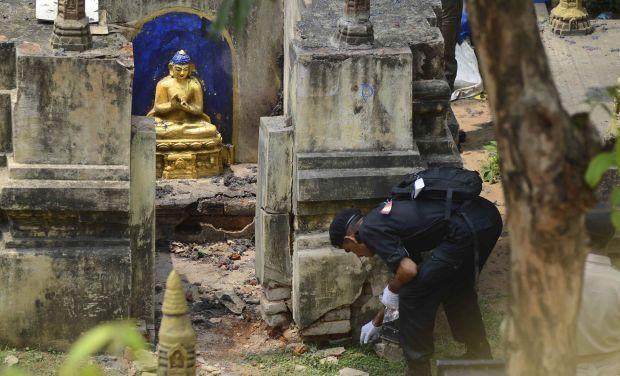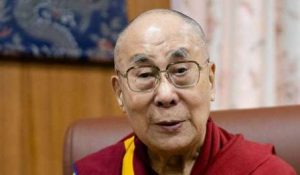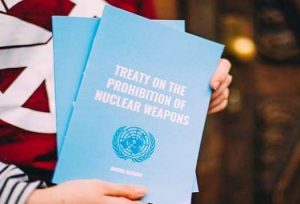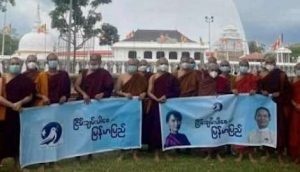
I got the upsetting news on July 7, 2013 at around 8.30 a.m. —
Terror struck Mahabodhi Temple at Bodh Gaya: a series of blasts had left two monks injured.
The first thought in my mind was this: Around 2600 years ago, Bodh Gaya was where the mahamantra of ahimsa (non-violence) was chanted and nurtured by a culture of non-violence. It permeated different parts of the world as the marga (path) of ahimsa. Today, this holy place of ahimsa, Bodh Gaya, has figured in the headlines as the victim of himsa!
Shocked, I could not help thinking that the news would lose its importance, for as they say, today’s papers are tomorrow’s chip wrappers. Someday, it would be put in the news archive merely as a historical record. Not surprisingly, with time people have forgotten that the Buddha gave his message of ahimsa first at Bodh Gaya. Only ahimsa can help humankind weather all the kinds of sufferings and miseries; ahimsa shows us the way to peace.
At this point, it is pretty hard to idenfity the perpetrators who rocked the native land of non-violence. This has been a direct assault on ahimsa by himsa. Now if we address the issue only from a sectarian perspective, we would probably suffer even more terribly, for it might allow the easy occurrence of a series of ever-ending crimes (each of which might be of greater intensity and complexity than the previous!).
How should we honour the legacy of an ethical teacher’s message? Perhaps it is the most important question of our time. The issue matters to the foundational coherence of society as a whole. The Buddha was unique among those who made valuable contributions to the Indian tradition of philosophy and religion. It goes without saying that the spiritual enlightenment that the Buddha attained at Bodh Gaya was a remarkable achievement for the human race. The Buddha did not speak alone about non-violence, but he was the one Guru who said that ‘ahimsa param dharma’ — the seed of which was sowed on the ground of Bodh Gaya. Perhaps it is the reason why it is the heartland for the Buddhists as well as peacelovers. Unfortunately, that holy place is reeling from shock at an unthinkable attack on sacred soil.
Though the Indian Freedom Movement of 1857 was said to be violent, Gandhiji’s movement (satyagraha), which helped free India from foreign rule, was based on the principle of non-violence. He believed that non-violence is the only way to go. It is the same ideal that inspired great leaders across the world like Marin Luther King Jr. and Nelson Mandela.
Here it is noteworthy that a non-violent atmosphere cannot be achieved even by applying the Buddha’s Middle Way to himsa and ahimsa. This is a rare situation where there truly is a binary divide: we have to choose either of them. Which will today’s civilized society go with?
In the Second Noble Truth, the Buddha said that if there is suffering, there must be a cause. So the perpetrators’ heinous act being an event, it is sensible to identify the troubles that led them target the heartland of ahimsa. The Third Noble Truth states that there is a cessation of suffering. However, unless and until we discover the source of their suffering and agony, we cannot get through their cessation of suffering.
How much is our society committed to mitigate these challenges? Our modern social system is democratic, the important characteristics of which are equality, freedom and rule of law. To ensure the smooth running of this system, we have legal procedures that uphold the rule of law. Furthermore, there is the United Nations, a common platform with a popular slogan of peace and security (and subtly, non-violence, without which the two cannot be achieved). Despite all these institutions of the rule of law, we could not avoid this violence and have hence failed to cease suffering.
Now let us turn to ‘we, the civilized people’ and our misconception of the issue which often seems to escalate the violence. Remarkably, when an ethnic community or a community of a particular religious faith is at risk, we think that it is solely the concern of the community. Time and again we forget that our indifference may strengthen those who would do harm and weaken the innocent. This is what that seemed to happen when Kart Westergaard, a European cartoonist, showcased a cartoon of Prophet Hazarat Muhammad. When it was followed by a strong protest from Muslims like it was incumbent on Muslims to safeguard their sentiment. A similar incident took place when M. F. Hussain, an Indian artist, portrayed the nude Saraswati, Hindu Goddess of learning. Quite naturally, it is the Buddhists’ concern this time. Of course, communities other than the victim-community do not voice concern about the latter’s safety. When they do, it is minimal and formal.
All our spiritual fathers (Gautam Buddha, Hazarat Muhammad, Jesus Christ, Lord Mahavira, Srimanta Sankardeva, etc.) spoke for the human or the society as a whole, not for their respective followers. Where is the harm in sharing concern without attaching it solely to the community in question?
We are happy to learn that all the top Indian leaders and the members of different organizations have visited Bodh Gaya following the recent blasts— they assured the Buddhists of their support and promised full investigations into the incident and security to them. Very soothing. But like any sincere lover of non-violence, I missed one important point in their valued speech: that the disaster was a severe blow by himsa on the home of the virtues of loving kindness, humanity, patience, giving and above all ahimsa. The most disturbing part of the blast’s aftermath is the opportunistic attempt to make the issue a blame-game.
This reminds me of a passage from ‘Nirbachita Column’, a piece by a famous feminist writer of Bangladesh, Taslima Nasreen. One day, as she was on her way home by a rickshaw, a young man put a burning cigarette on her arm (she was in sleeveless top). Out of pain, wanted to call out to the passers-by for help, but she did not; for she could forgive the offender as silly or ignorant. But she could not have tolerated the ill-motive of the man to touch her arm with the excuse of showing sympathy or healing.
I feel love and admiration for those who truly adore ahimsa and practice it in their thought, speech and action. I also want to pay homage to those bauddha bhikkhus who suffered a barbaric attack because they follow and carry forward the teachings of the Buddha and thus safeguard the value-laden tradition of India. I think it’s high time all the devotees of ahimsa to join them and fight the most non-violent war on earth — ‘war on himsa’. Satyameva jayate.











